Citi Movement
CITI MOVEMENT (GRIOT NEW YORK) embraces the aural and visual cacophony of the cityscape, its throbbing heartbeats, and the harmonies that emerge from the conflicts and compromises of urban life. Wynton’s first dance score, and one of his first extended compositions, CITI MOVEMENT was written for the choreographer Garth Fagan’s modern ballet, GRIOT NEW YORK. An extraordinary collaboration between leading African-American artists, CITI MOVEMENT (GRIOT NEW YORK) also featured set constructions by sculptor Martin Puryear. Its sold out premiere at the Brooklyn Academy of Music in 1991 was one of the cultural events of the year. The piece is divided into three sections – “Cityscape,” “Transatlantic Echoes,” and “Some Present Moments of the Future” – and it is performed here, as it was on opening night, by the Wynton Marsalis Septet.
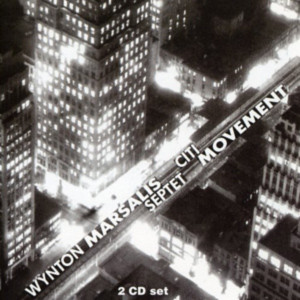
Album Info
| Ensemble | Wynton Marsalis Septet |
|---|---|
| Release Date | January 26th, 1993 |
| Recording Date | July 27-28, 1992 |
| Record Label | Columbia |
| Catalogue Number | C2K 53324 |
| Formats | CD, Digital Download |
| Genre | Jazz Recordings |
Track Listing
| Track | Length | Preview |
|---|---|---|
| CD 1 | ||
| Hustle Bustle | 4:36 | Play |
| City Beat | 10:21 | Play |
| Daylight Dinosaurs | 3:35 | Play |
| Down The Avenue | 4:44 | Play |
| Stop And Go | 5:31 | Play |
| Nightlife-Highlife (Yas, Yas) | 6:03 | Play |
| How Long? | 1:05 | Play |
| I See The Light (Vocal Version) | 1:34 | Play |
| I See The Light (Instrumental Version) | 2:10 | Play |
| Duway Dialogue | 0:40 | Play |
| Dark Heart Beat | 8:17 | Play |
| Cross Court Capers | 5:37 | Play |
| Bayou Baroque | 4:13 | Play |
| Marthaniel | 8:16 | Play |
| Spring Yaoundé | 6:00 | Play |
| CD 2 | ||
| The End | 3:04 | Play |
| The Legend Of Buddy Bolden | 4:43 | Play |
| Swingdown, Swingtown | 8:59 | Play |
| Highrise Riff | 7:04 | Play |
| Modern Vistas (As Far As The Eye Can See) | 17:13 | Play |
| Curtain Call | 8:49 | Play |
Liner Notes
In 1985, I was introduced to modern dance by Garth Fagan. Due to the break-up of my first band, this was a particularly trying year. I happened to be playing a concert in Rochester, and following that afternoon’s sound check I was approached by Mr. Fagan to come check out his dance company. To tell the truth, I was really too unsophisticated to appreciate any form of modern dance at that time. But, because I have good home training I did not say no (or lie and say I was too tired). We drove to a small gymnasium, which is always a good sign for me as a basketball lover. The entire company was assembled and I was introduced with a small speech: Garth said that I he knew that I was in a period of irresolution (how he knew that I did not know); he knew that our music, though perhaps unrecognized, was an important part of contemporary American culture and history; he knew that we had to strengthen and support each other’s development; and he knew that I was going to dig what I saw. For one hour, they put on a performance of tremendous range and beauty – just for me. Us in that room – them moving in the most expressive style imaginable, and me thoroughly enraptured and overwhelmed – I recognized then the challenge of writing a piece that could come close to dignifying their grace. Years later our collaboration first appeared on stage as Griot New York. Throughout these last seven years whenever we’re in the same town, The Wynton Marsalis Septet and Garth Fagan Dance get together, even if it’s just to eat some curried goat.
I would like to dedicate this composition to Garth Fagan Dance and to Albert Murray, whose personal guidance and whose monumental work on jazz, Stomping The Blues, have been indispensable to my development.
–Wynton Marsalis
CITI MOVEMENT was written by Wynton Marsalis for Griot New York, a modern ballet choreographed by Garth Fagan. Its premier performance at the Brooklyn Academy of Music in 1991 was received by cheering audiences and drew praising reviews. With this recording, the music stands quite tall alone and now does its own dances. The three-part composition uses jazz to render the feeling of a city, the waves and wages of history, and the emotional references connected to styles and rhythmic grooves.
In keeping with the leisurely, sequestered situations in which jazz composers do their work, free of intrusions from the external world, this extended piece was written in a month, while the Marsalis band was on the road performing every night and giving master classes in the daytime. Herb Harris was playing soprano and tenor saxophones with Marsalis while CITY MOVEMENT was composed. He says, “It was crazy. Amazing. We were working all of these gigs and Wynton was giving the talks and instructions to student musicians during the day, running to get some food before the concert and going into his room every night to compose. It shocked all of us. With all he had to do, you wouldn’t have expected him to come up with this kind of music. But there it is.”
Harris is referring to the intricacy of CITI MOVEMENT. The inclusiveness of the composer’s vision demands writing that sets a contemporary standard both down home and radical, and the unconventional sophistication of the work is the result of a synthesis much more successful in its broadness than that of anyone else in jazz at this time. In the process of realizing this very large work, the syntheses Marsalis presents does even more serious damage to the mushy thought that has defined him as some sort of an anemic traditionalist at war with adventure. In fact, Marsalis subsumes both the overt and the subtle particulars of the tradition while even bettering schools of so-called avant-garde playing that he has long dismissed for their dependence on eccentricity and their ineptitude. By building on a background of solid study and impassioned commitment to human expression through the charisma of inspired form, Marsalis continues to lead an independent vanguard that quite skillfully uses many rhythms, shifts of tempo and mood, as well as a counterpoint all the more startling for its variety and its exclusive reliance on the sound of jazz.
The obstacles to making quality music of complex components have been overcome by grooming an ensemble capable of handling the extremely varied approaches Marsalis brings to the invincible factors of blues and swing, of lyricism and grooves. The band is unchallenged in terms of its stylistic sweep and authority. The leader himself has achieved a tone that is an addition to the sound of the trumpet, his fluidity is peerless, and the way he nuances the entire emotional range of jazz techniques in his improvising gives an easily recognizable quality to his playing. Wes Anderson, Todd Williams, Wycliffe Gordon, Eric Reed, Reginald Veal, and Herlin Riley are all at the front lines of their instruments, and the attentive fire, ease, lyricism, and wit they bring to this music is the stuff for which enthusiastic adjectives are pressed into duty. Such musicians express an affirmative vision of life in our time, one that can stand up to the chill of the machine and cut away the mass media’s blindfold of clichés. They supply the enchantment that always attends the bittersweet call of inspired form and individual invention.
Yet all of this recording’s surprises and pleasures build upon the grandeur of Duke Ellington and also show a relationship to the conceptual richness of Charles Mingus. One can hear the influence of Ellington works such as “Black, Brown, And Beige,” “Harlem,” “The Controversial Suite,” and Anatomy Of A Murder, where panoramas of style, rhythm, and mood are used as much for epic expression as for wit and satire. One can easily make the case that perhaps no one other than Ellington or Strayhorn could have effectively done so much with the voicings and the tonal colors of a seven-piece band as doe Marsalis here. And though Marsalis has yet to study Mingus in the detail he has studied Ellington, the prince of jazz once gave many listenings to Mingus Ah Um and Blues And Roots, two high points of the bassist-composer’s output. Marsalis was taken by the sense of layered and contrasting styles that allowed Mingus to construct pieces that were often free of clichés and called upon resources much more varied than setting an original bebop line on top of borrowed or altered harmonies. In fact, the bassist’s New York Sketchbook from 1957 is a particularly obvious precedent for Cityscape, the first movement.
Even so, none of the literal or conceptual connections to grand masters diminish the fact that Marsalis is writing his own music and finding his own forms. Within CITI MOVEMENT one hears many things that reach so deeply into the American sensibility that they not only make use of the richest veins of national music but even parallel what Herman Melville was up to in Moby Dick. In that great American novel, Melville pulled together all kinds of writing for drama, intellectual speculation, parody, suspense, lyricism, humor, and tragedy. His novel was as much a study of the language itself as it was of character and the circumstances that spark revelations of the soul.
The appetite for large challenges that so clearly defined Melville’s literary longball is heard here as an other example of a major American artist seeking the spirit and grit of democracy. Marsalis has invested much time contemplating the nature of the American spirit and how to translate more and more aspects of it into musical forms that moved from within the context of the culture itself. He was able to focus with greater sense of detail after reading a copy of John A. Kouwenhoven’s The Beer Can by the Highway, given to him by Albert Murray. He was particularly impressed by Kouwenhoven’s observation that America is about process, a sense of development based on transitions taking their direction from varied elements of momentum: “Our history is the process of motion into and out of cities; of westering and the counter-process of return; of motion up and down the social ladder – a long, complex, and sometimes terrifyingly rapid sequence of consecutive change. And it is this sequence, and the attitudes and habits and forms which it has bred, to which the term America’ really refers.”
Marsalis uses his epic canvas to test structures that change as they move forward while reiterating central motives that make thorough use of the jazz basics – 4/4 swing, the blues, the ballad, and Afro-Hispanic rhythms. Out of small cells hurled at the ear during the collage of the opening movement, entire sections emerge before the movement is finished. Rhythmic grooves, as opposed to melody or harmony, provide the development of the next movement, while a foreshadowing flash of “Highrise Riff” appears in its shuffle unit, “Marthaniel,” and the transition from that shuffle to the movement’s concluding ballad refers back to “Daylight Dinosaurs.” The material that concluded the first movement opens the third, which itself ends with a vamp that uses the same three notes that began the bass progression of the first movement.
This heroic work contains many signal moments of ensemble virtuosity, rhythmic authority, and commands the sweet to thrilling friction that ignites the idiom. Listen to just the first five minutes of Cityscape for an experience of musical skill comparable to that of the best ensembles in jazz history. For both mellow and heated swing of classic dimensions: “Swingdown, Swingtown” and “Highrise Riff.” The feature for guest Marthaniel Roberts, “Marthaniel” – in its shuffle, its constant modulation, and its horn lines rising from the bottom layer of the gutbucket – scoops up with greasy, indigo fundamentals. As proof of what surprises can be brought to the post-Coltrane modal waltz: the horn writing on “Dark Heartbeat.” Moods of lyric rapture: “Nightlife-Highlife” and “Spring Yaounde’.” In the interest of hearing a groove as deep as you want it: “Bayou Baroque.”
Clearly, Marsalis does not associate sloppiness with the soulful and he understands that the heart can be even more passionately expressed through precision. This is one of the reasons that the composer takes so much advantage of the contrapuntal possibilities that bring such intricate freshness to his music. The thick but uncluttered lines declare respect for the charisma of clarity. That respect is always expressed in the aspiration to eloquence, which is perhaps one definition of the task facing any truly ambitious artist.
Yet there is never any art this is perfectly clear, for even in its purity there is the illusiveness that is the signature of creation. This music has that quality. Through the impassioned virtuoso command of inanimate instruments, CITI MOVEMENT supplies an affirmative answer to the dilemma of humanity and technology, one as mysterious as it is rousing. From its portrait of a city in the first movement, its examination in the second of aboriginal moods and the sources that underlay blues and romantic song, and its third movement summation that slowly fades down, we get a tonal portrait and a tonal symbol as transcendent as the will to empathetic order that is the fulcrum with which jazz moves the world. That mysterious answer made affirmatively musical is the essence of this recording and is one that we should expect to continue hearing, in fresh form after form, from Wynton Marsalis.
–Stanley Crouch
Credits
DISC ONE
1. Hustle Bustle
2. City Beat
3. Daylight Dinosaurs
4. Down The Avenue
5. Stop And Go
6. Nightlife-Highlife (Yas, Yas)
Transatlantic Echoes
7. How Long?
8. I See The Light (Vocal)
9. I See The Light (Instrumental)
10. Duway Dialogue
11. Dark Heartbeat
12. Cross Court Capers
13. Bayou Baroque
14. Marthaniel
15. Spring Yaoundé
DISC TWO
Some Present Moments Of The Future
1. The End
2. The Legend Of Buddy Bolden
3. Swingdown, Swingtown
4. Highrise Riff (1, 2, 3, 4)
5. Modern Vistas (As Far As The Eye Can See)
6. Curtain Call
All selections Written and Arranged By – Wynton Marsalis
Published by Skaynes Music (ASCAP)
Musicians:
Wynton Marsalis, trumpet
Wycliffe Gordon, trombone
Wess Anderson, alto saxophone
Todd Williams, tenor & soprano saxophone
Reginald Veal, bass
Herlin Riley, drums
Eric Reed, piano
Herb Harris, tenor sax on “I See The Light (Instrumental)” and “Curtain Call”
Marcus Roberts, piano on “Marthaniel”, “The End”, “Swingdown, Swingtown” and “Curtain Call”.
Produced by Delfeayo Marsalis
Executive Producer: Dr. George Butler
Recorded by Les Stephenson and Patrick Smith at RCA Studio A (“The Legend Of Buddy Bolden” – Studio B)
Mixed by Patrick Smith at Signet Sound, Los Angeles and House of Music, New Jersey.
Assistant Engineers: “Wild” William Johnson, “Duke” Earl Martin, Major Little, Marion Conaty
Digital consultants: Tom & Ray at Audio Force, NYC.
Recorded July 27-28, 1992
“To obtain more wood sound from the bass, this disc was recorded without usage of the dreaded bass-direct.”
Edited by Jalmus
Conductor and music copyst: Ron Carbo
Piano provided by Steinway.
Marthaniel Roberts appears courtesy of RCA Records/Novus.
Special Thanks to Liz Thompson, Mary Reilly and the Brooklyn Academy of Music staff, Martin Puryear, Stanley Crouch, Marthaniel Roberts, Delfeayo Marsalis, Vladimir Negrikoff, Don Ienner, Dr. George Butler, Kevin Gore, Rich Kudolla, Jo DiDonato, Mary Ellen Cattaneo, Elise Kolesky, Marylin Laverty, Victoria Clark, Edward Arrendell, Vernon Hammond, Larry Williamson, Leslie Douglas, David Robinson, Lolis Elie, Billy Banks and Lisa Stewart Wrice.
Exclusive Personal and Financial Management:
AMG International
P.O. Box 55398, Washington, DC 20011
Edward C. Arrendell, II / Vernon H. Hammond, III, Partners
Art Direction: Wynton Marsalis
Package design: Josephine DiDonato
Photography: Richard Corman
Cover Photography: Bernice Abbott/Commerce Graphics Ltd. Inc.
Personnel
- Eric Reed – piano
- Reginald Veal – bass
- Wycliffe Gordon – trombone
- Herlin Riley – drums, tambourine
- Todd Williams – tenor sax, soprano sax
- Wess “Warmdaddy” Anderson – alto sax, sopranino sax
- Herb Harris – tenor sax, soprano sax
- Marcus Roberts – piano
Also of Interest
-
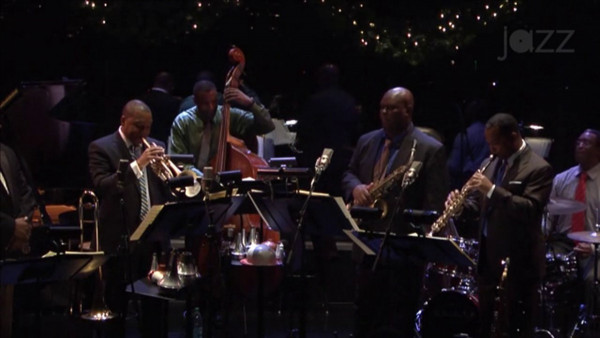 Videos
Videos
Nightlife-Highlife (Yas, Yas) - Wynton Marsalis Septet at Dizzy’s Club 2013
-
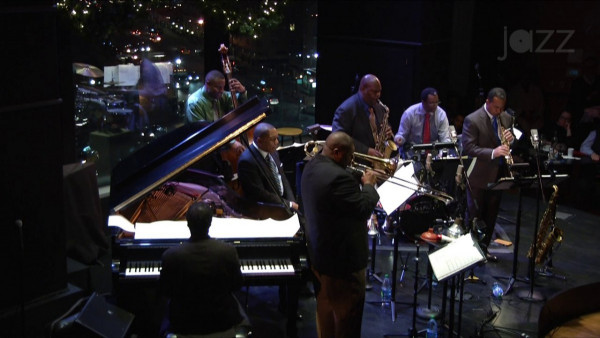 Videos
Videos
Down The Avenue - Wynton Marsalis Septet at Dizzy’s Club 2013
-
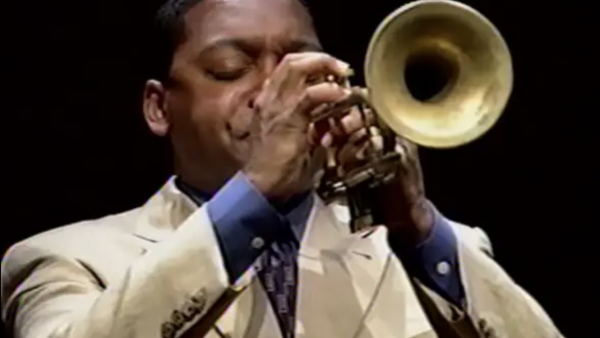 Videos
Videos
Spring Yaoundé - Wynton Marsalis and Eric Reed in Yokohama, JAPAN
-
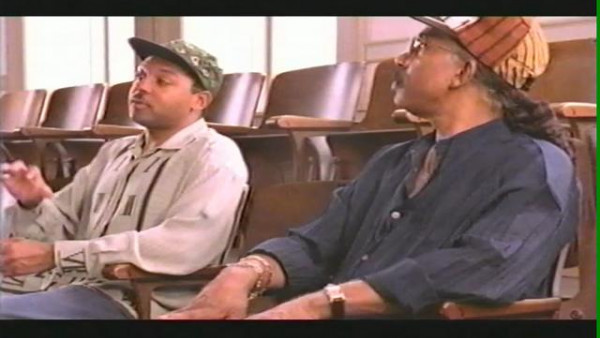 Videos
Videos
Griot New York - Wynton Marsalis and Garth Fagan Dance
-
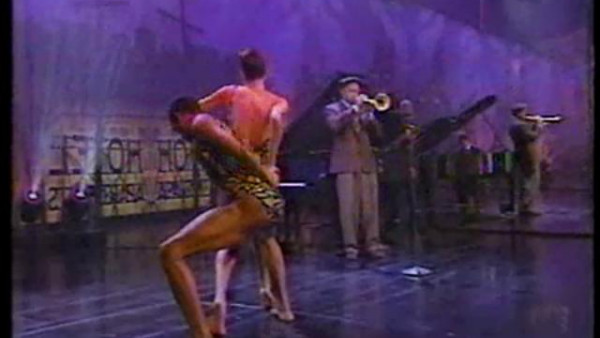 Videos
Videos
Spring Yaoundé - Wynton Marsalis with Garth Fagan Dance
-
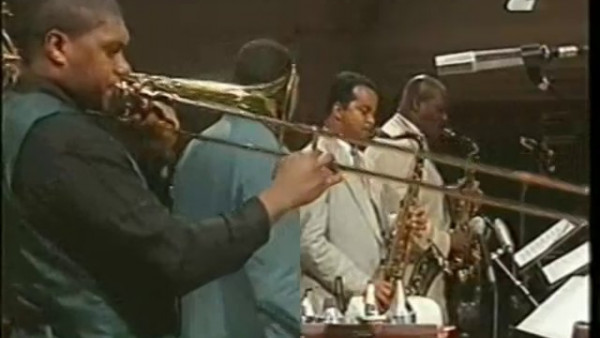 Videos
Videos
Swingdown, Swingtown - Wynton Marsalis Septet in Warsaw (1994)
-
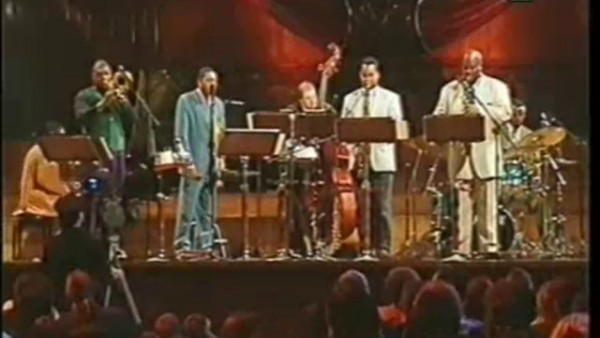 Videos
Videos
The Legend of Buddy Bolden - Wynton Marsalis Septet in Warsaw (1994)
-
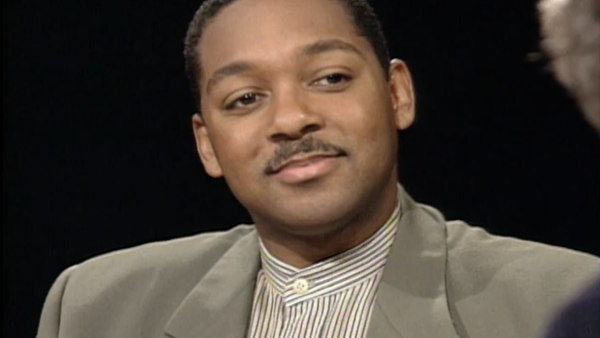 Videos
Videos
Wynton talking about music, culture and education - Charlie Rose Show
